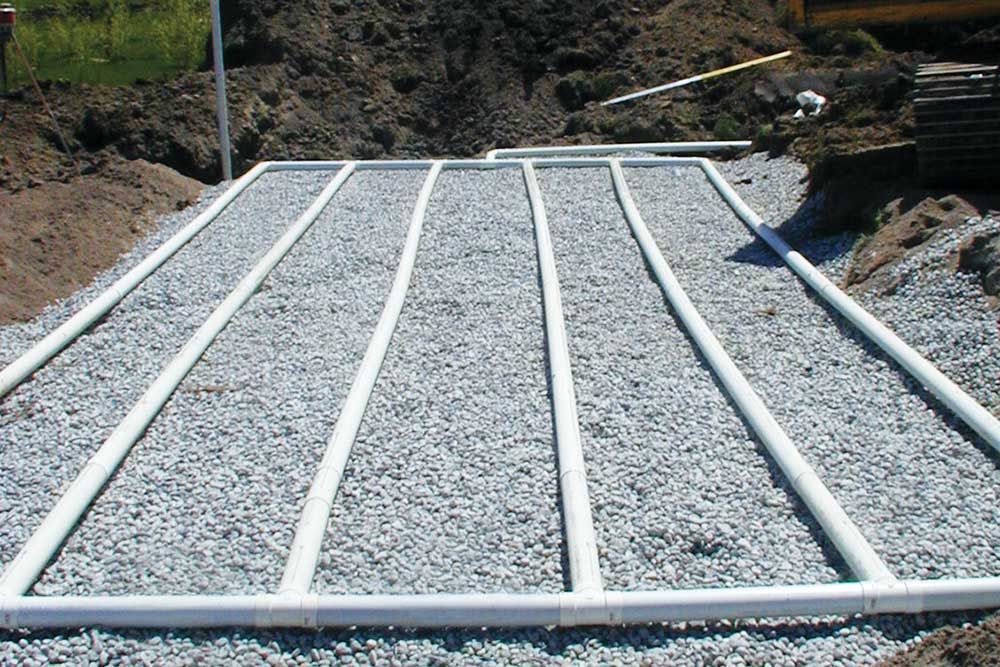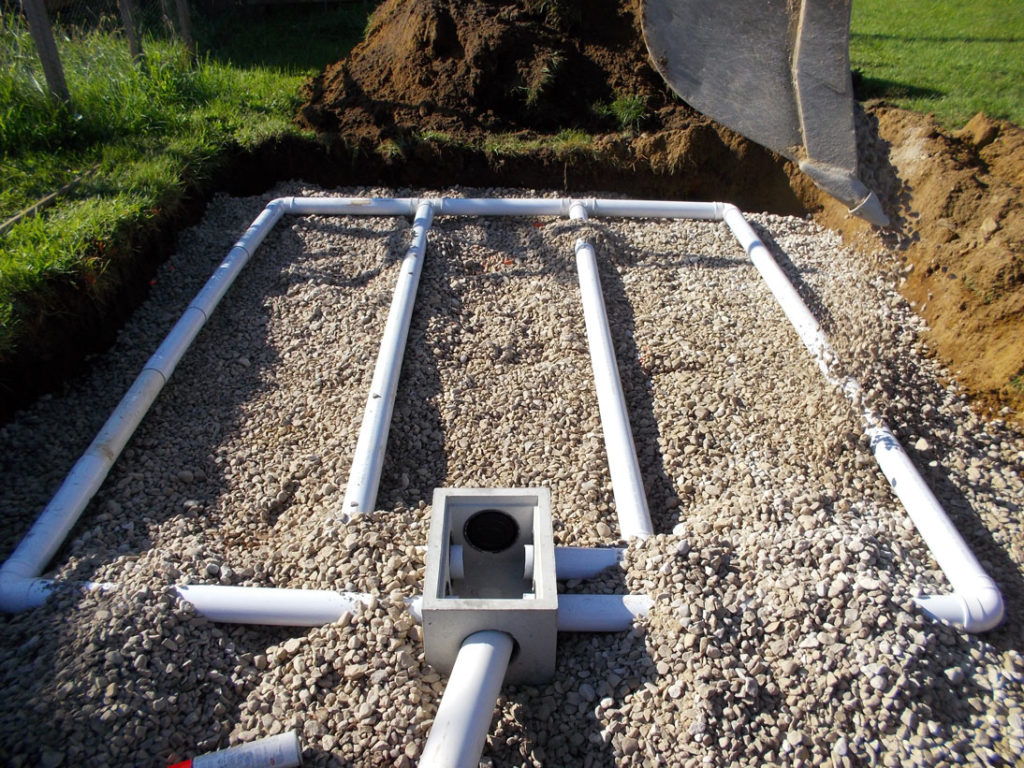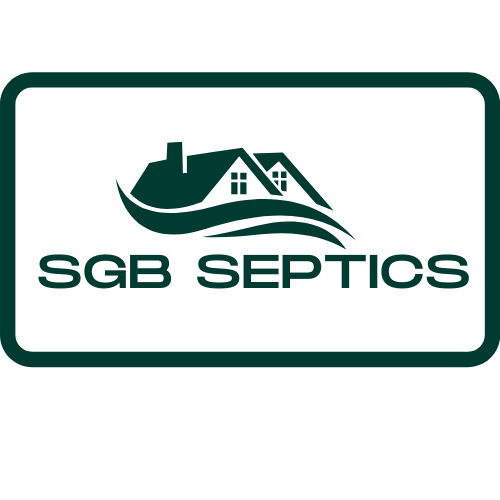Septic System Installation Options

A conventional septic system is typically installed at a single-family home or small business.
The gravel/stone drainfield is a design that has existed for decades. The name refers to the construction of the drainfield. With this design, effluent is piped from the septic tank to a shallow underground trench of stone or gravel. A geofabric or similar material is then placed on top of the trench so sand, dirt, and other contaminants do not enter the clean stone.
Effluent filters through the stone and is then further treated by microbes once it reaches the soil below the gravel/stone trench.
Gravel/stone systems are relatively large in overall footprint and may not be suitable for all residential sites or conditions.
Infiltrator Chamber Septic System Installation
Gravelless drainfields have been widely used for over 30 years in many states and have become a conventional technology replacing gravel systems. They take many forms, including open-bottom chambers, fabric-wrapped pipe, and synthetic materials such as expanded polystyrene media. The gravelless systems can be manufactured with recycled materials and offer a significant savings in carbon footprint.
An example of a gravelless system is the chamber system. The chamber system serves as an alternative design to the gravel/stone system. The primary advantage of the chamber system is increased ease of delivery and construction. They are also well suited to areas with high groundwater tables, where the volume of influent to the septic system is variable (e.g., at a vacation home or seasonal inn), in an area where gravel is scarce, or in areas where other technologies such as plastic chambers are readily available.
This type of system consists of a series of connected chambers. The area around and above the chambers is filled with soil. Pipes carry wastewater from the septic tank to the chambers. In the chambers, the wastewater comes into contact with the soil. Microbes on or near the soil treat the effluent. Infiltrator beds are 1/3 smaller than conventional beds


The Eljen GSF (Geotextile Sand Filter) is an alternative for onsite septic leachfield systems. Independent and third party testing is used to assess and confirm the GSF’s performance under a variety of conditions.
- Treatment and disposal in the same footprint
- Flexible site installation
- Reduced site impact
- Lightweight and easy to handle
Each GSF Module is made up of a geotextile fabric and a plastic core material that work together to provide vertical surface area and oxygen transfer. The GSF System applies treated effluent to the soil, increasing the soil’s long-term acceptance rate. A Specified Sand layer provides additional filtration, and prevents saturated conditions.
Primary Treatment Zone
- Perforated pipe is centered above the GSF Module to distribute septic effluent over and into corrugations created by the plastic core of the GSF Module.
- The GSF Module’s unique design provides increased surface area for biological treatment of nutrients and contaminants.
- Open air channels within the GSF Module support aerobic bacterial growth on the Module’s geotextile fabric interface, and promotes oxygen in the system.
- An anti-siltation geotextile fabric covers the top and sides of the GSF Module to protect the system from the migration of fines.
- The GSF Module provides biomat management, and takes the burden of treatment and biomat development off of the native soil.
Secondary Treatment zone
- Effluent drips into the Specified Sand layer and supports unsaturated flow into the native soil.
- The Specified Sand layer also protects the soil from compaction and helps maintain cracks and crevices in the soil.
- Native soil provides final filtration and allows for groundwater recharge.
Raised Filter Bed Septic System Installation
Since soils are frequently too hard, too wet, or you are living in an area surrounded by solid rock such as the Canadian Shield, you must have another option for a septic bed. The OBC allows for Filter Beds and Fill Based Absorption Trenches.
These beds can be built upon heavy clay, solid rock and high ground water tables. To do this, you must bring in a lot of sand and then build a small septic system on top of the sand that you just brought in.
Other than requiring a lot of sand and trucking, there are a few down-sides to these systems. They are also known as Mound Systems due to all of the sand that they are mounded upon.
Because the waste strength entering the Filter Bed is quite high, and is concentrated in a very small area, these systems often blow-out prematurely due to biomat growth. The photo below shows heavy biomat growth in the stone and sand and in the tile itself. When you force a large amount of waste to be treated in a small area, you end up with a short life span.
Where you may get 25 years of life from a conventional bed, you may end up with only 10 years from a raised filter bed or a Fill Based Absorption Trench, and you end up buying a new system again.
Benefits of Raised Filter Beds
Most inspectors, designers and engineers are very familiar with raised filter bed designs. This makes it easier to get approvals when building permit application drawings are submitted.
Ontario has permitted raised filter beds for over 40 years.
Because regulators have written them into the building code there are currently NO MAINTENANCE AGREEMENTS REQUIRED BY HOMEOWNERS to have to worry about after the installation. This is the main benefit of installing a raised filter bed instead of a tertiary system.

